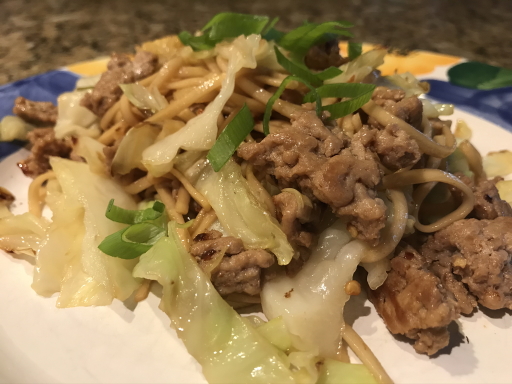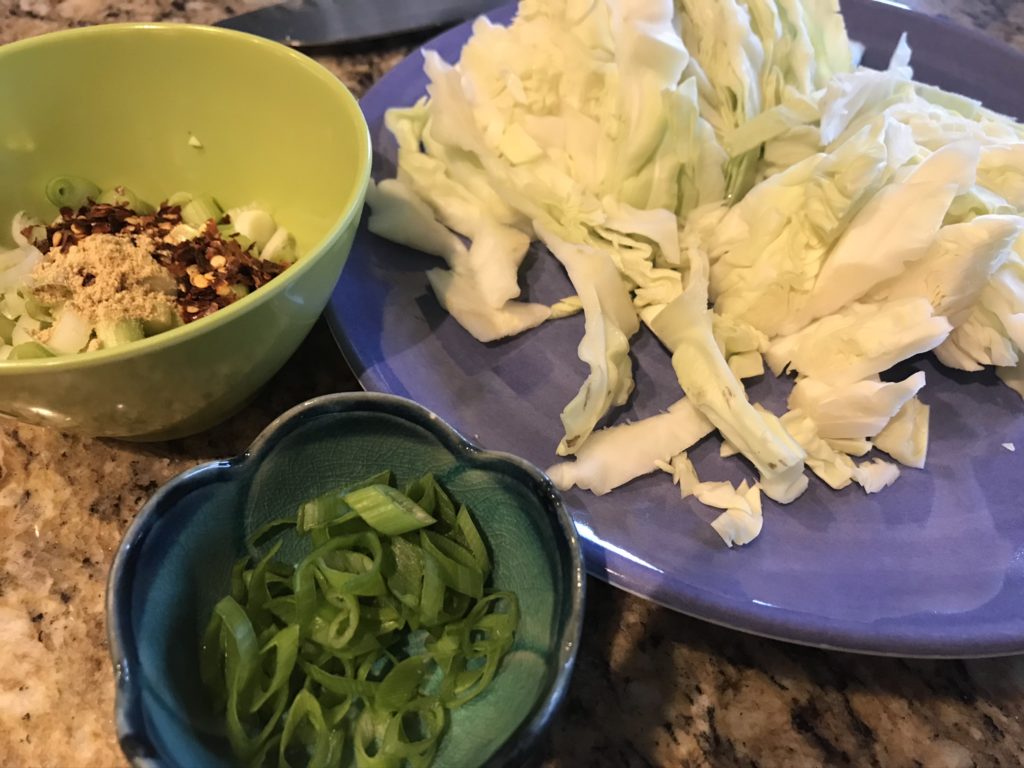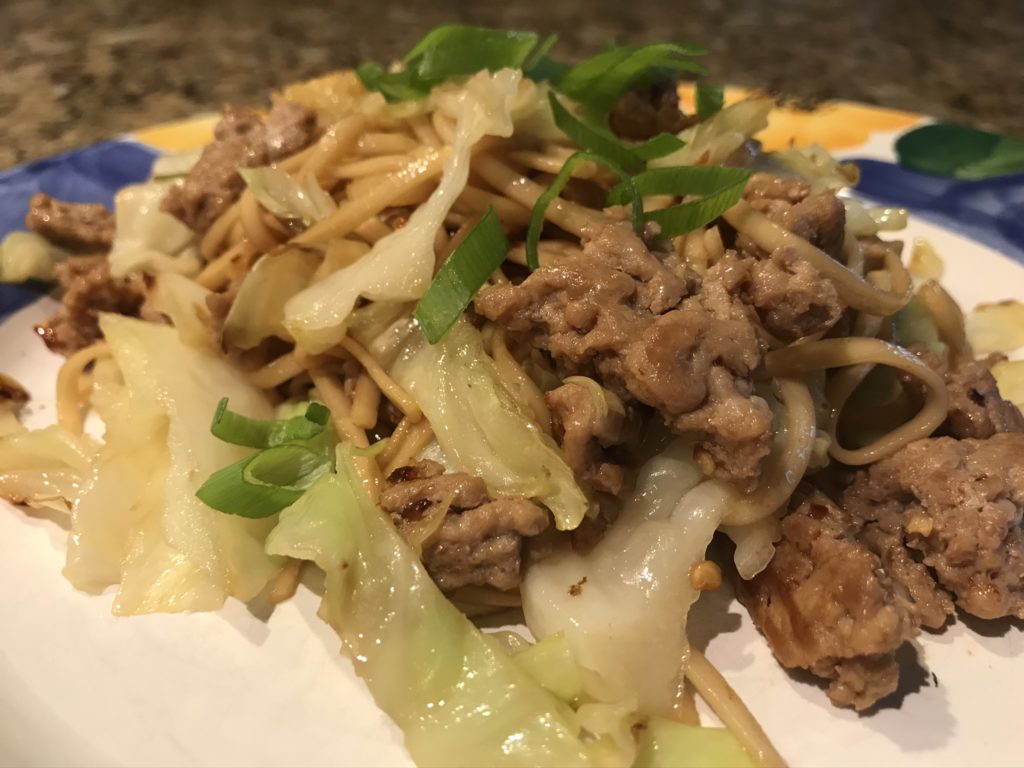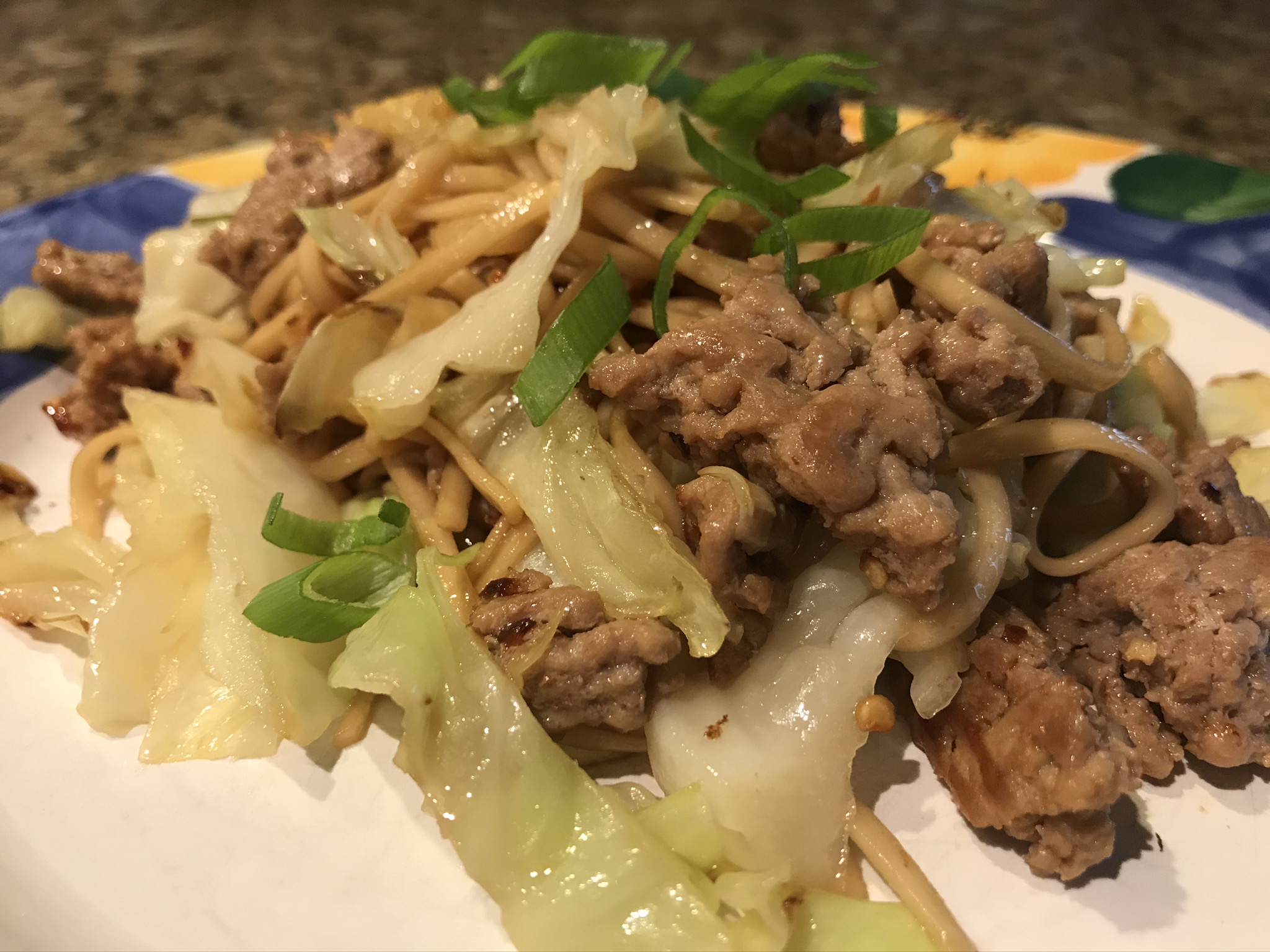Fall is coming up and I want to prepare you with this spin on a chicken noodle soup. I don’t know about you, but I pretty much don’t like canned chicken noodle soup. I know it’s the beloved classic of Americans, but when it’s from a can, the noodles and veggies are mushy. And the chicken? You need a magnifying glass to find any.
I know I just criticized your nostalgic soup so I must be crazy to to tell you to go make some Top Ramen, the crunchy dehydrated nest of god knows what’s in them noodles that you find in every college kitchen. But there’s something sentimental about combining chicken noodle soup with Top Ramen. Reminds me of growing up and then being an “adult” in my first apartment, trying to make ends meet. It’s hot, comforting, and full of noodle goodness.
This recipe comes from Delish, and I’ve thrown in some new twists. Feel free to customize this to your preference with your favorite veggies, or use turkey instead of chicken.
Prep your ingredients. Chop up a couple red peppers and carrots. If you don’t like those, try using celery, broccoli, or bok choy. If you’re a veggie hater, skip it all. Next, thinly slice green onion and mince a few cloves of garlic. Season a couple chicken breasts with salt and pepper. Grab a 4-cup box of low-sodium chicken broth, a couple packages of ramen noodles (throw away the seasoning packets!). Chop some cilantro, cut a lime into wedges, and half another lime to have handy.
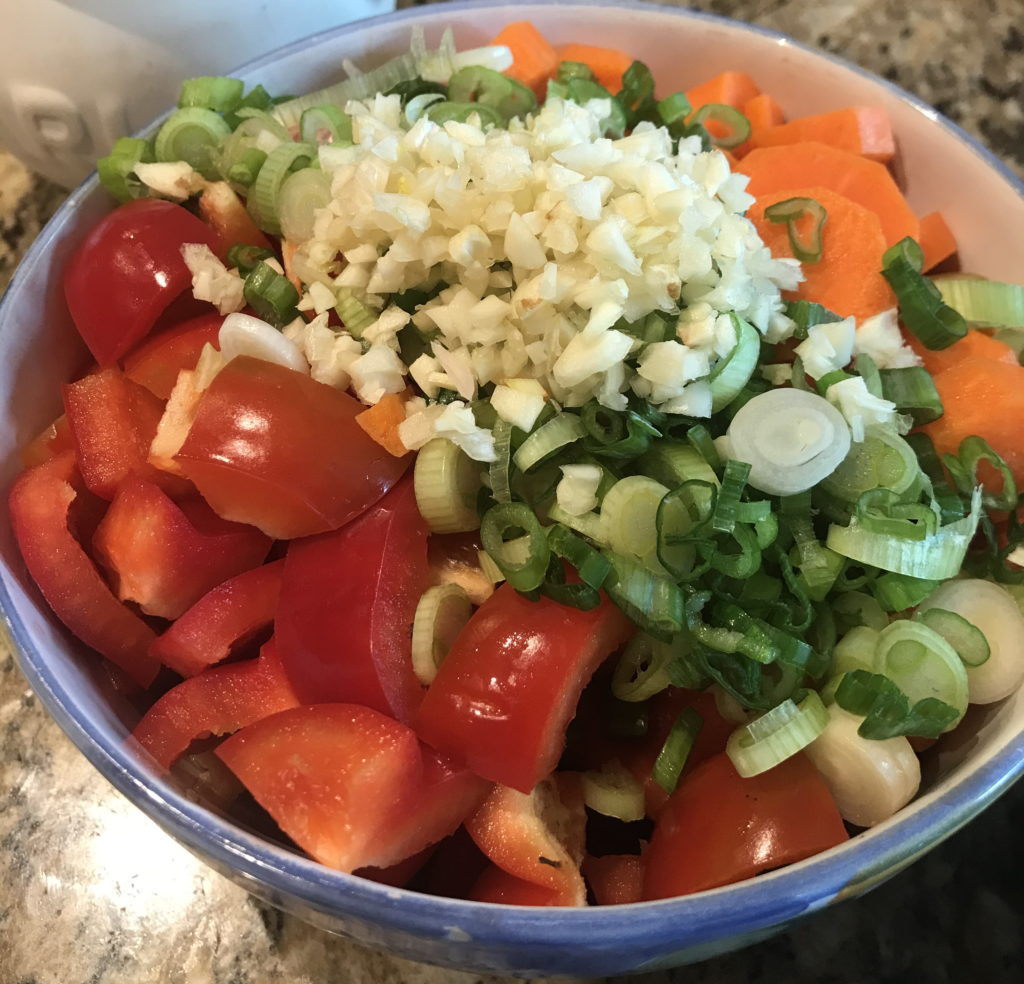
Next, heat up some olive oil in a Dutch oven or large soup pot, and saute the chicken breasts until cooked through. Remove when cooked and chop into cubes to the size you prefer. You can skip this step by shredding a rotisserie chicken, but I didn’t have one and I wasn’t about to get into my car to buy one. A word of advice. Always have ground beef, chicken breasts or thighs, and bacon hanging out in your freezer for “emergencies.” Yes, I do have bacon emergencies, but that’s a story for another time.
In the same pot, heat up a little more oil, and toss in your veggies and garlic. Season with salt and pepper and cook until they are softened, but not squishy. Remember, this is not canned soup.
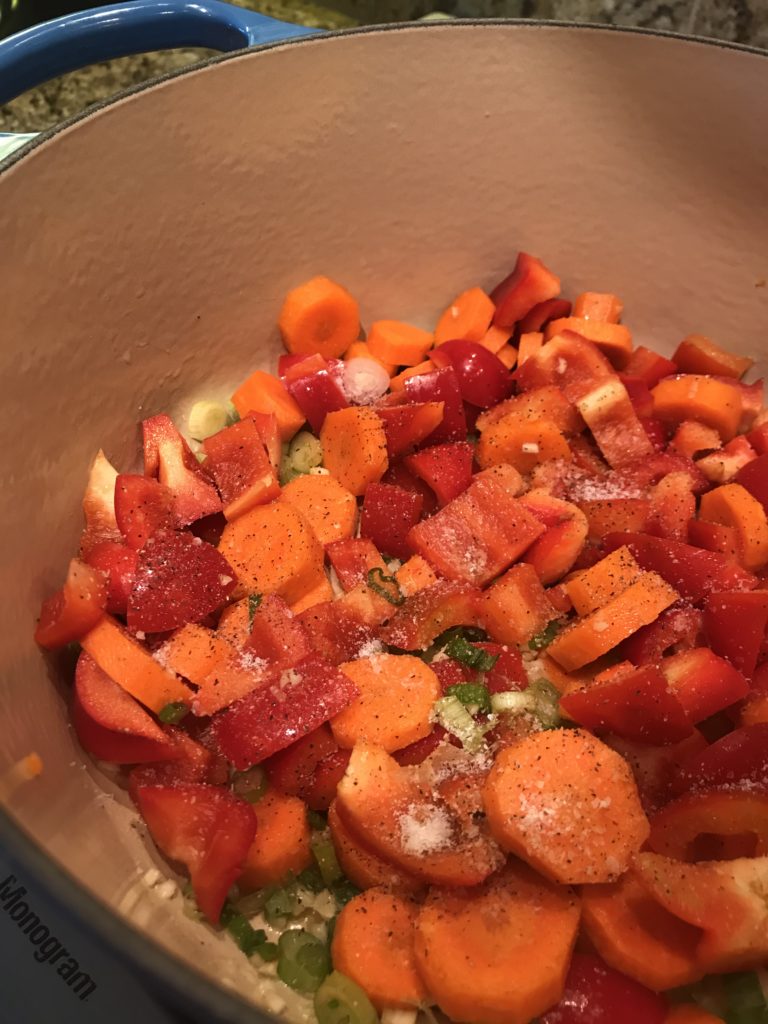
Add chicken broth and simmer. Add your ramen and cook according to the package, about a couple of minutes. Add the cooked chicken and cilantro. Squeeze a lime over it.
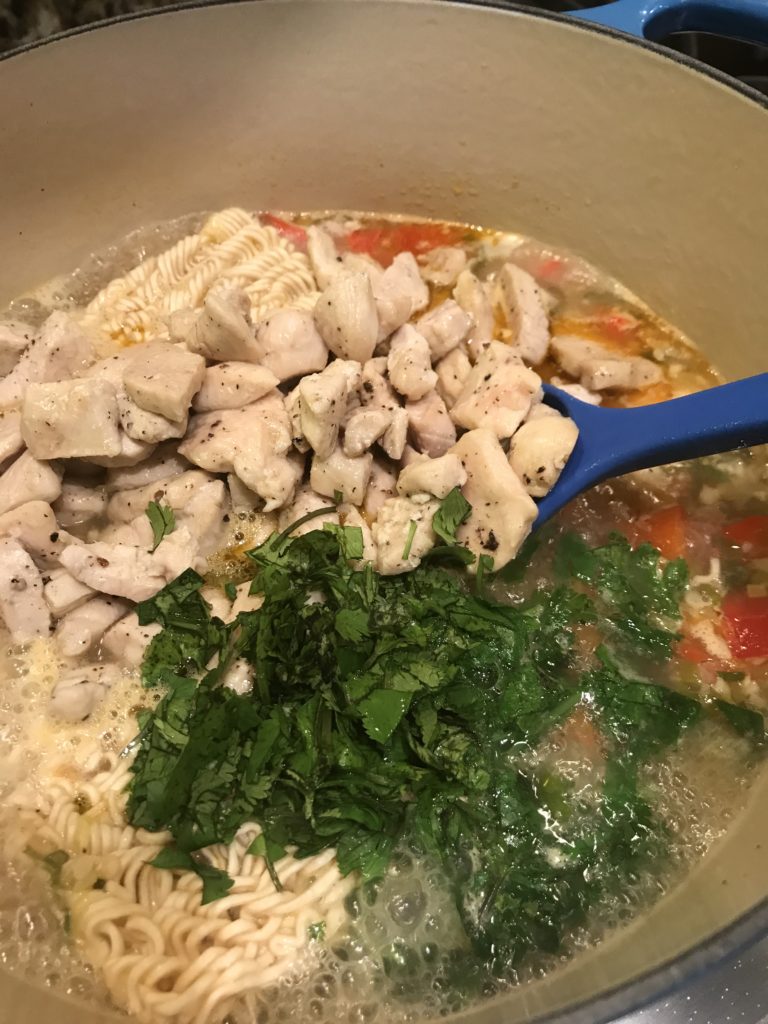
Mix it up.
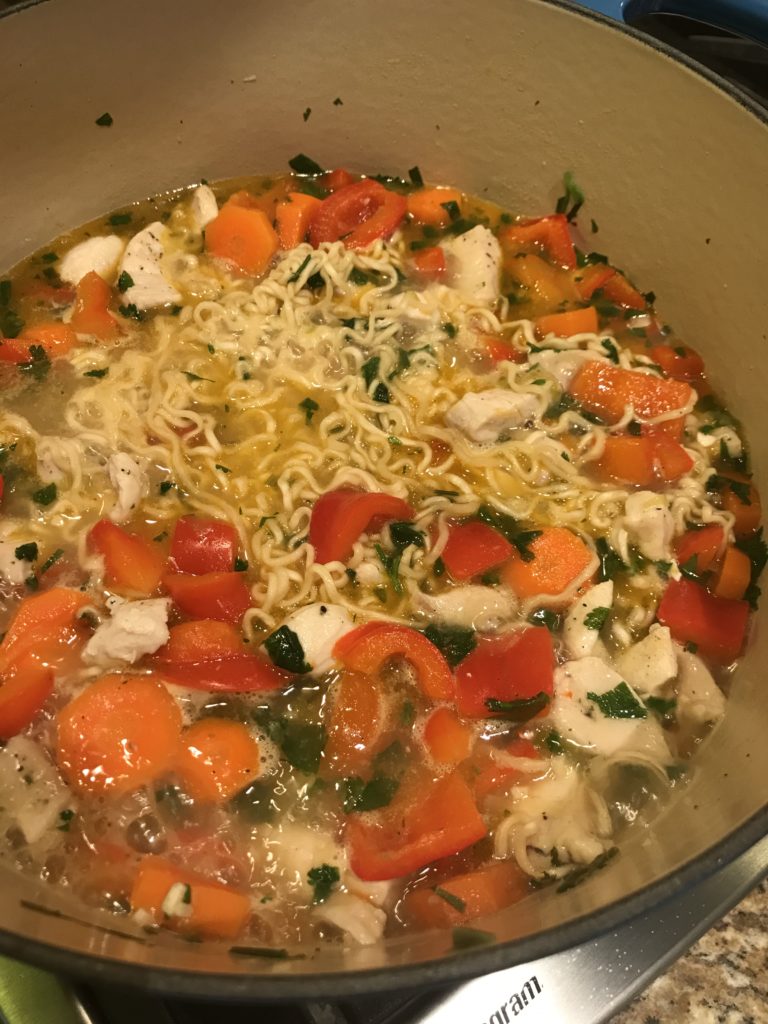
And that’s it. Serve in a bowl with lime wedges (or not).
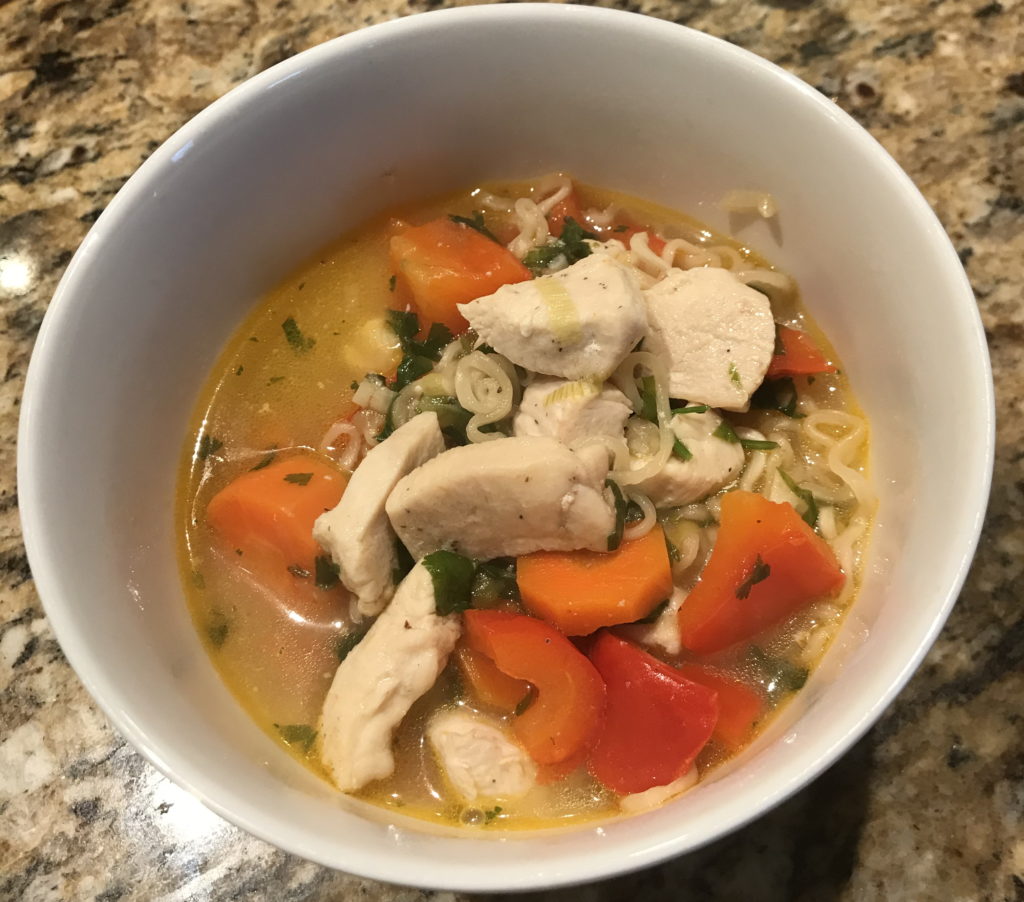
Sit back and enjoy the perfectly cooked veggies with pieces of chicken you can actually see. Slurp up the noodles that your mom scolded you about when you made those sucking noises. Be amazed at how the lime juice improves the taste of the broth, which adds acidity and a little flavor. This soup brings on happiness.

Ingredients
Method
- Season chicken breasts with salt and pepper. In a Dutch oven or large soup pot, heat 1 tablespoon of olive oil. Saute chicken until cooked through. Remove from pot, chop into cubes, and set aside.
- In the same pot, heat another tablespoon of olive oil. Add peppers, carrots, green onions, and garlic. Season with salt and pepper. Cook until soft for about 6-8 minutes.
- Add chicken broth and bring to a boil. Turn down to simmer. Add ramen noodles and cook according to package, until tender, for about 2-3 minutes. Stir in cooked chicken, cilantro, and lime juice. Simmer until heated through. Serve in a bowl with lime wedges.


